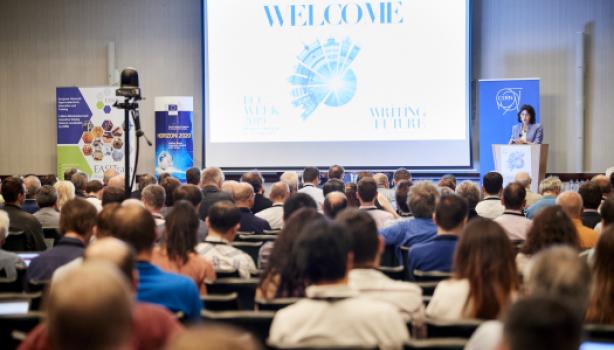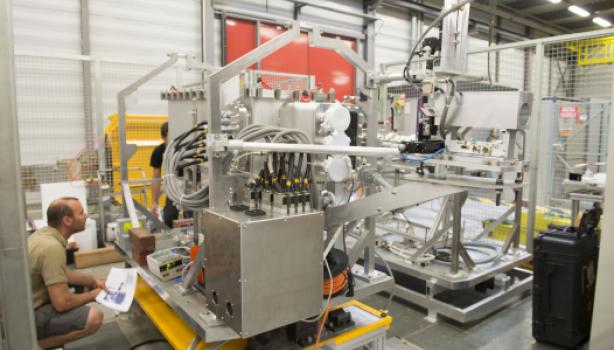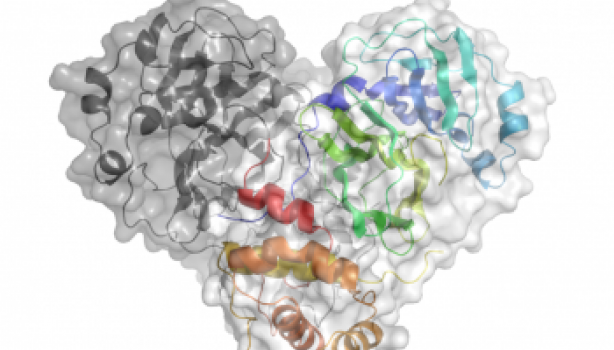The new compact non-rotating gantry design enables the treatment of tumours from different angles using superconducting toroidal magnets (Image: Daniel Dominguez/CERN)
Derived from developments in accelerators, detectors and computing, the state-of-the-art technologies behind particle physics have historically contributed to innovations in medical technologies. CERN’s latest addition to this is GaToroid, a novel superconducting and lightweight gantry that can surround a patient and potentially revolutionise the delivery of hadrons for therapies, including cancer treatment.
Hadron therapy is an advanced radiotherapy technique that uses proton or ion beams to deliver precision treatment of tumours, sparing the surrounding healthy tissues from unwanted radiation. The intrinsic precision of this technique makes it particularly suitable for treating tumours in children or close to organs at risk. Furthermore, using rotating gantries to move the beam around the patient, medical doctors can irradiate the tumours from different angles, sparing even more of the surrounding tissue.
Gantries are complex pieces of engineering, representing a considerable part of the installation costs and size, or footprint, in hadron therapy. Particularly for carbon ions, there are only two gantries in the world. The first one is at the Heidelberg Ion-Beam Therapy Center in Germany, measuring 25 metres in length and weighing more than 600 tonnes. The second one, in Chiba, Japan, is a superconducting gantry with a reduced size and weight, but with the added challenge of a rotating cryogenic system. While the therapeutic interest for carbon or other ions heavier than protons is increasing, the enormous size of today’s gantries, combined with the lack of viable standard technological solutions, poses relevant constraints on future hadron-therapy facilities.
Well aware of these challenges, CERN scientist and magnet expert Luca Bottura came up with a new, innovative gantry design based on a toroidal magnet concept, GaToroid, which bends the treatment beam without the need to rotate the structure. The gantry comprises a set of fixed, discrete superconducting coils constituting the toroidal magnet, and a bending device at the entrance of the structure to direct the beam at the right angle. Due to the use of superconductors, GaToroid will substantially reduce weight and footprint compared to conventional gantries, especially for ion beams. This invention was not the output of a dedicated research study, but a result of serendipity coming from Luca’s connection to other fields of applied science and his own professional experience.
This animation shows how the superconducting toroidal magnets around the patient are used to direct an incoming hadron beam at the right angle to treat a tumour (Video: Daniel Dominguez/CERN)
Luca Bottura, who leads CERN’s Magnets, Superconductors and Cryostats group, illustrated his innovative design for a hadron therapy gantry based on a toroidal magnet. He presented his idea at the last Knowledge Transfer Seminar, GaToroid: A Novel Superconducting Compact and Lightweight Gantry for Hadron Therapy, which took place on 22 November at CERN. The recording of the event is easily accessible at:
https://indico.cern.ch/event/754093/
This article was published at kt.cern in 20 November 2018.





